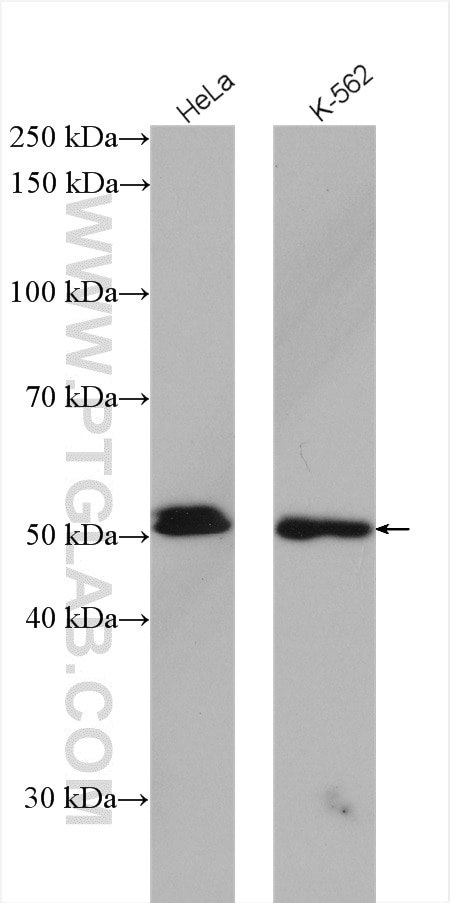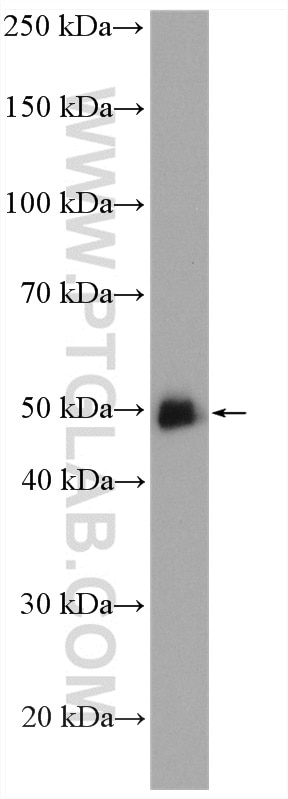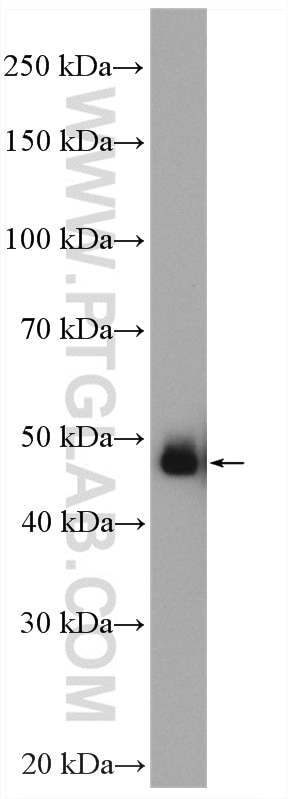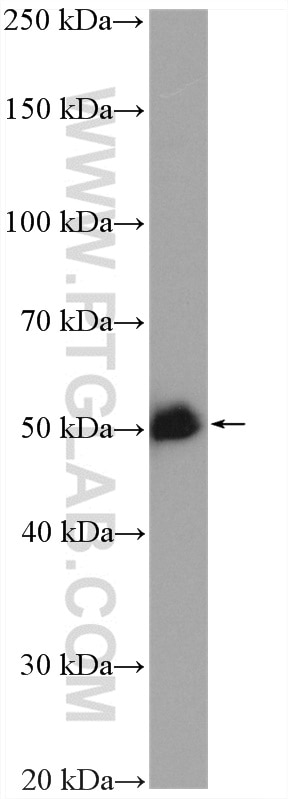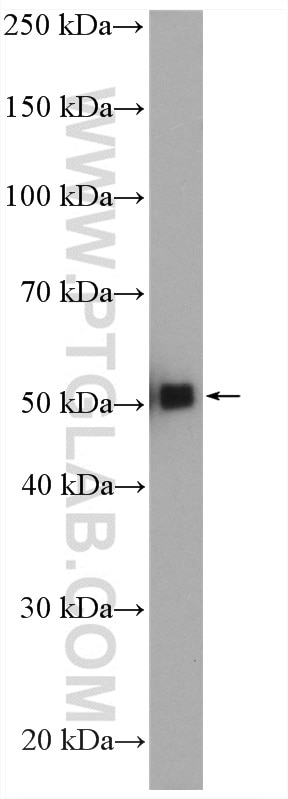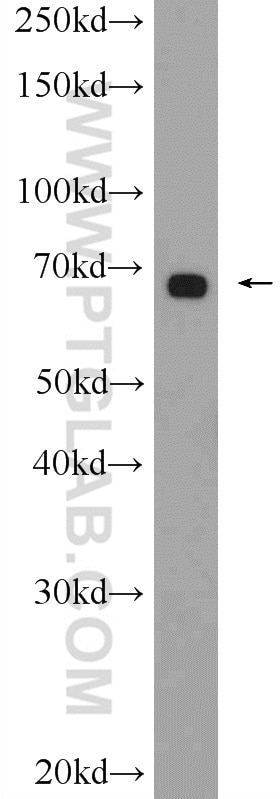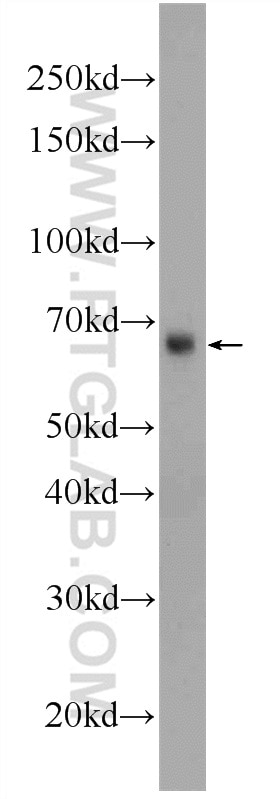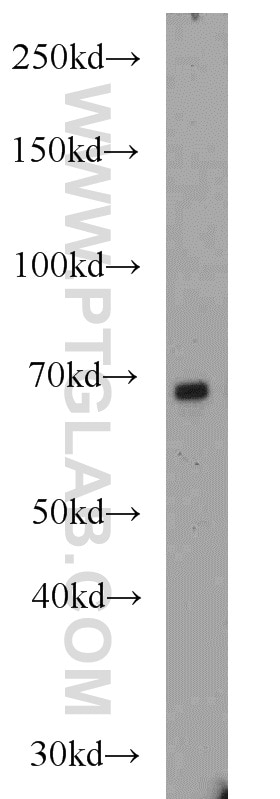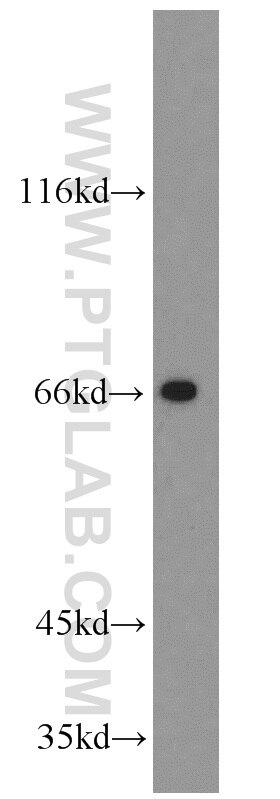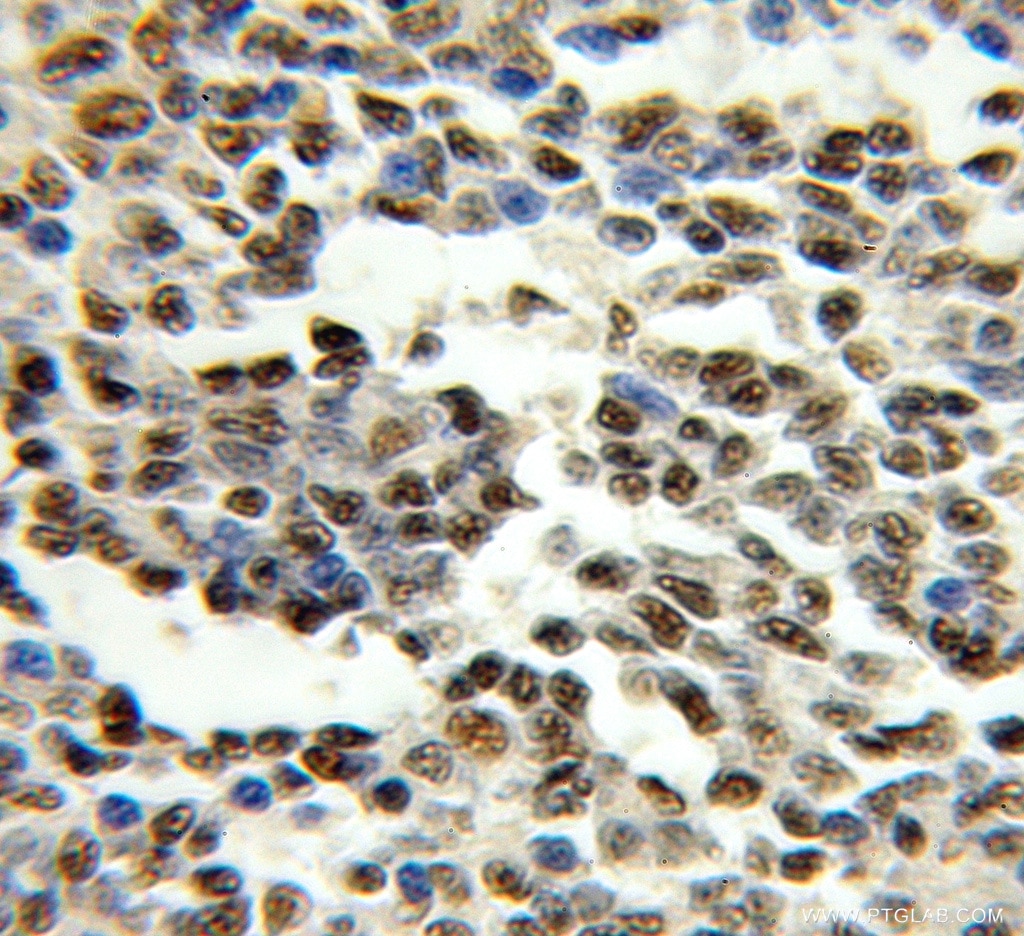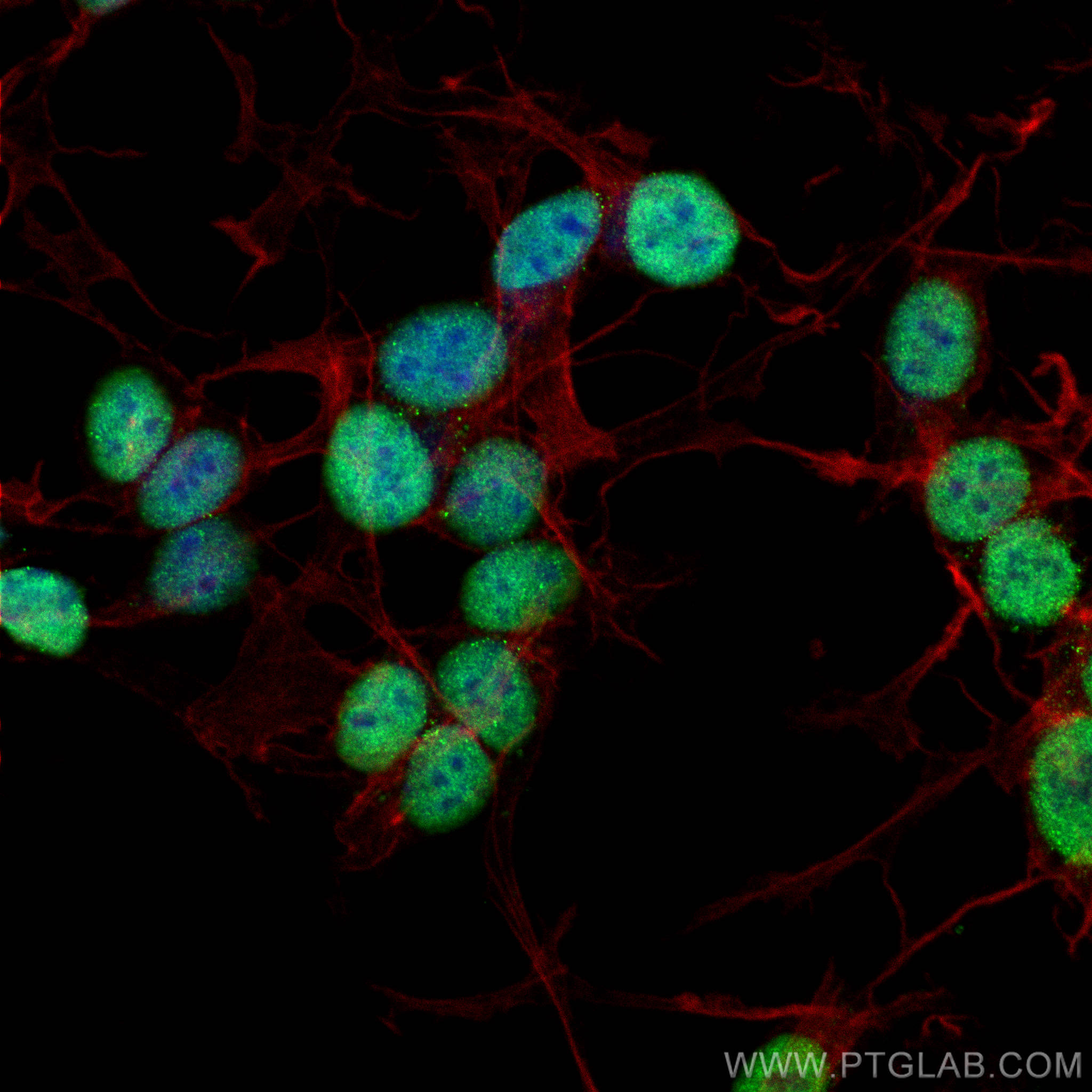- Phare
- Validé par KD/KO
Anticorps Polyclonal de lapin anti-GATA2
GATA2 Polyclonal Antibody for WB, IF, IHC, ELISA
Hôte / Isotype
Lapin / IgG
Réactivité testée
Humain, rat, souris
Applications
WB, IHC, IF/ICC, ChIP, ELISA
Conjugaison
Non conjugué
N° de cat : 11103-1-AP
Synonymes
Galerie de données de validation
Applications testées
| Résultats positifs en WB | cellules HeLa, cellules HEK-293, cellules HepG2, cellules K-562, tissu cardiaque de rat, tissu cardiaque de souris, tissu hépatique de rat, tissu hépatique de souris |
| Résultats positifs en IHC | tissu de lymphome humain il est suggéré de démasquer l'antigène avec un tampon de TE buffer pH 9.0; (*) À défaut, 'le démasquage de l'antigène peut être 'effectué avec un tampon citrate pH 6,0. |
| Résultats positifs en IF/ICC | cellules SH-SY5Y, |
Dilution recommandée
| Application | Dilution |
|---|---|
| Western Blot (WB) | WB : 1:500-1:3000 |
| Immunohistochimie (IHC) | IHC : 1:20-1:200 |
| Immunofluorescence (IF)/ICC | IF/ICC : 1:50-1:500 |
| It is recommended that this reagent should be titrated in each testing system to obtain optimal results. | |
| Sample-dependent, check data in validation data gallery | |
Applications publiées
| KD/KO | See 3 publications below |
| WB | See 7 publications below |
| IHC | See 2 publications below |
| IF | See 3 publications below |
| ChIP | See 2 publications below |
Informations sur le produit
11103-1-AP cible GATA2 dans les applications de WB, IHC, IF/ICC, ChIP, ELISA et montre une réactivité avec des échantillons Humain, rat, souris
| Réactivité | Humain, rat, souris |
| Réactivité citée | Humain, souris |
| Hôte / Isotype | Lapin / IgG |
| Clonalité | Polyclonal |
| Type | Anticorps |
| Immunogène | GATA2 Protéine recombinante Ag1557 |
| Nom complet | GATA binding protein 2 |
| Poids moléculaire observé | 50-60 kDa |
| Numéro d’acquisition GenBank | BC018988 |
| Symbole du gène | GATA2 |
| Identification du gène (NCBI) | 2624 |
| Conjugaison | Non conjugué |
| Forme | Liquide |
| Méthode de purification | Purification par affinité contre l'antigène |
| Tampon de stockage | PBS avec azoture de sodium à 0,02 % et glycérol à 50 % pH 7,3 |
| Conditions de stockage | Stocker à -20°C. Stable pendant un an après l'expédition. L'aliquotage n'est pas nécessaire pour le stockage à -20oC Les 20ul contiennent 0,1% de BSA. |
Informations générales
What is the molecular weight of GATA2? Is GATA2 post-translationally modified?
The molecular weight of GATA2 is 51 kDa. There are two known isoforms of GATA2 that use alternative first exons (PMID: 10731672). GATA2 can be phosphorylated, which regulates its activity (PMID: 7876160).
What is the subcellular localization of GATA2?
GATA2 acts as a transcription factor in the nucleus. However, it can also be found in the cytoplasm (PMID: 25163535) and its phosphorylation promotes nuclear localization (PMID: 15837948).
What is the tissue expression pattern of GATA2?
GATA2 was initially identified as a hematopoietic transcription factor regulating the differentiation of hematopoietic stem cells but is also present in early erythroid cells, mast cells, and megakaryocytes. Additionally, it is expressed in the central nervous system (PMID: 10357893).
Protocole
| Product Specific Protocols | |
|---|---|
| WB protocol for GATA2 antibody 11103-1-AP | Download protocol |
| IHC protocol for GATA2 antibody 11103-1-AP | Download protocol |
| IF protocol for GATA2 antibody 11103-1-AP | Download protocol |
| Standard Protocols | |
|---|---|
| Click here to view our Standard Protocols |
Publications
| Species | Application | Title |
|---|---|---|
EMBO J Functional screen reveals essential roles of miR-27a/24 in differentiation of embryonic stem cells. | ||
BMC Med Downregulation of AC092894.1 promotes oxaliplatin resistance in colorectal cancer via the USP3/AR/RASGRP3 axis | ||
PLoS Genet The PU.1-Modulated MicroRNA-22 Is a Regulator of Monocyte/Macrophage Differentiation and Acute Myeloid Leukemia. | ||
Int J Mol Sci LncRNA H19-Derived miR-675-5p Accelerates the Invasion of Extravillous Trophoblast Cells by Inhibiting GATA2 and Subsequently Activating Matrix Metalloproteinases. | ||
Endocrinology PGE2 and Thrombin Induce Myofibroblast Transdifferentiation via Activin A and CTGF in Endometrial Stromal Cells. |
